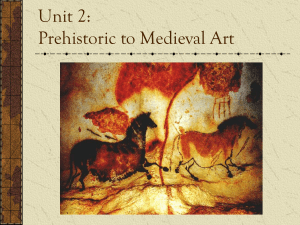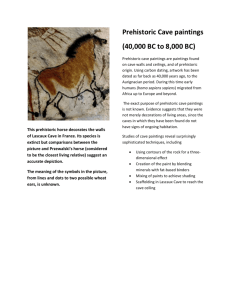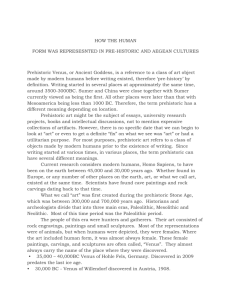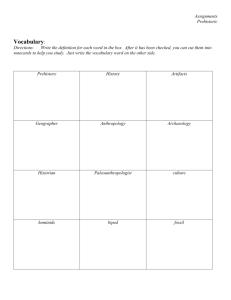Prehistoric Art - HRSBSTAFF Home Page
advertisement
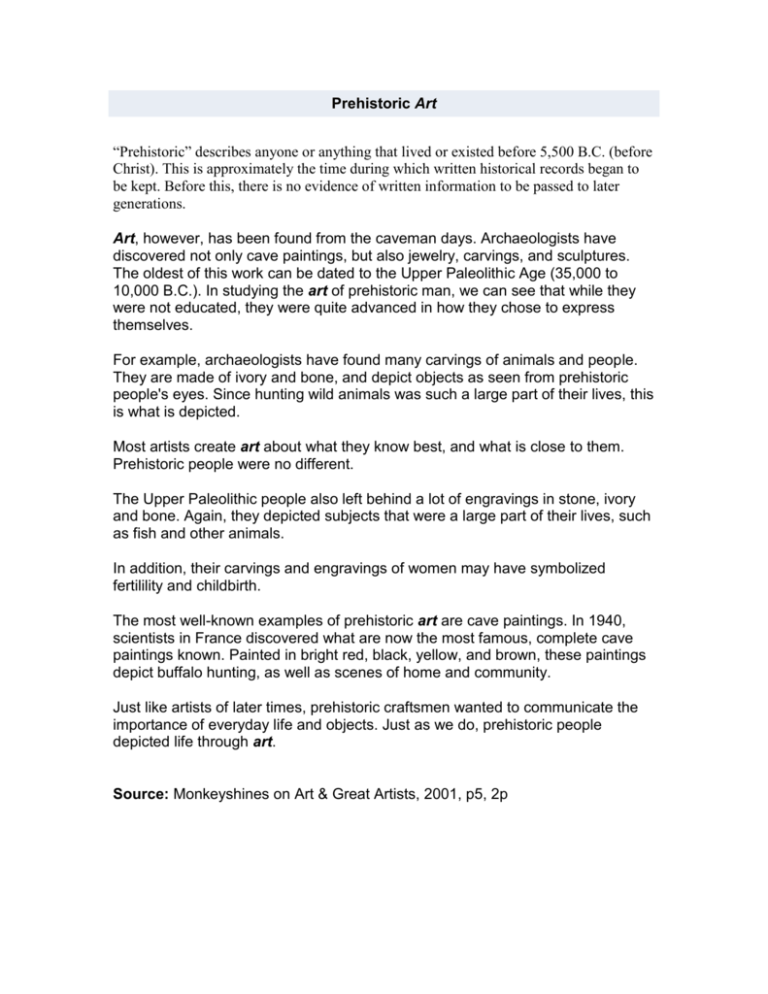
Prehistoric Art “Prehistoric” describes anyone or anything that lived or existed before 5,500 B.C. (before Christ). This is approximately the time during which written historical records began to be kept. Before this, there is no evidence of written information to be passed to later generations. Art, however, has been found from the caveman days. Archaeologists have discovered not only cave paintings, but also jewelry, carvings, and sculptures. The oldest of this work can be dated to the Upper Paleolithic Age (35,000 to 10,000 B.C.). In studying the art of prehistoric man, we can see that while they were not educated, they were quite advanced in how they chose to express themselves. For example, archaeologists have found many carvings of animals and people. They are made of ivory and bone, and depict objects as seen from prehistoric people's eyes. Since hunting wild animals was such a large part of their lives, this is what is depicted. Most artists create art about what they know best, and what is close to them. Prehistoric people were no different. The Upper Paleolithic people also left behind a lot of engravings in stone, ivory and bone. Again, they depicted subjects that were a large part of their lives, such as fish and other animals. In addition, their carvings and engravings of women may have symbolized fertilility and childbirth. The most well-known examples of prehistoric art are cave paintings. In 1940, scientists in France discovered what are now the most famous, complete cave paintings known. Painted in bright red, black, yellow, and brown, these paintings depict buffalo hunting, as well as scenes of home and community. Just like artists of later times, prehistoric craftsmen wanted to communicate the importance of everyday life and objects. Just as we do, prehistoric people depicted life through art. Source: Monkeyshines on Art & Great Artists, 2001, p5, 2p





